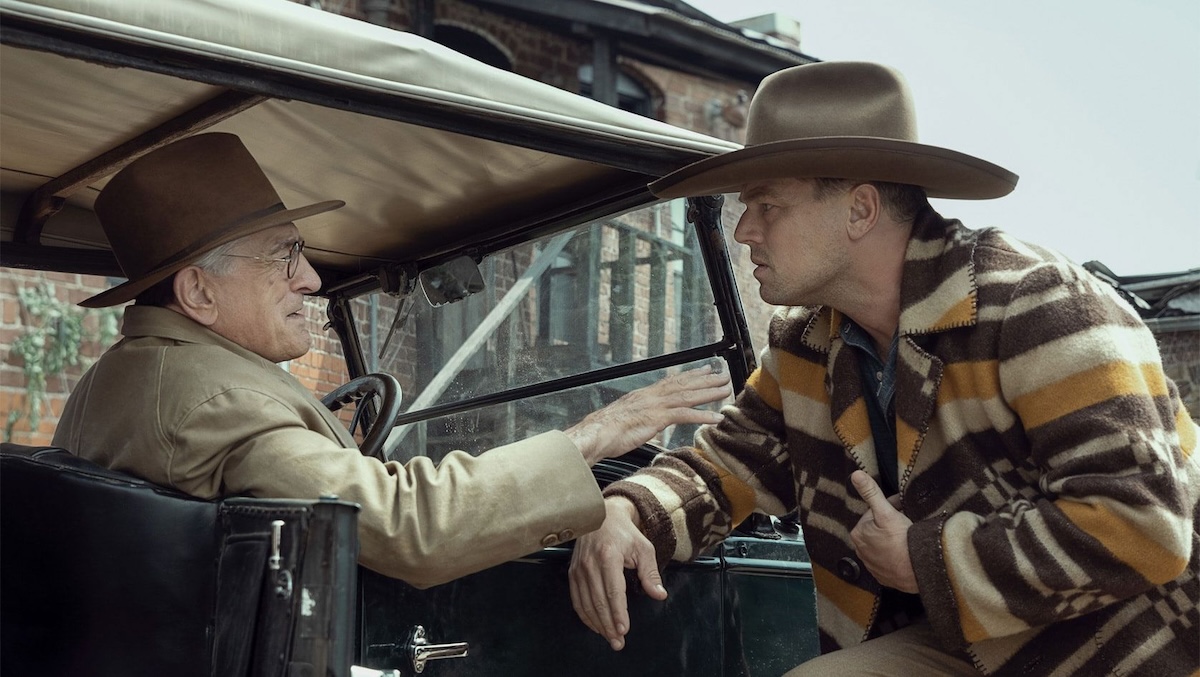What do we think about when we think about Martin Scorsese? Many of us think about gangster stories, especially ultra-violent, grisly, and operatic ones. He helped bring the genre into the modern age with his masterpieces Mean Streets, Goodfellas, Casino, and The Departed. Even when he strayed from crime subjects, the native New Yorker often seems tethered to his urban terrain: Taxi Driver, After Hours, Bringing Out the Dead, and Gangs of New York presented a city whose grandeur and squalor were somehow interchangeable.
Yet careful observers will note that Scorsese has always been more eclectic than his public image suggests. Even Taxi Driver was bookended by a kitchen sink drama of a single woman’s evolution (Alice Doesn’t Live Here Anymore) and a musical (New York, New York). If anything, Scorsese, now in his 80th year, has grown more restless with time—witness the accumulation of such heterogeneous projects as Shutter Island, Hugo, and Silence. At the same time, part of the pleasure of his recent body of films is finding the subtle but definite connections between them.
Exactly one decade ago, Scorsese offered a maximalist portrait of 1980s-era avarice in The Wolf of Wall Street, and while that film’s overripe excesses are a world away from his newest film—a spare, solemn account of the fleecing and killing of members of the Osage Nation in the teens and ’20s in Oklahoma, Killers of the Flower Moon—the two works are unquestionably the product of the same moral vision. For all their differences of tone, setting, and style, both films present societies failing to cope with material riches. At opposite halves of the 20th century, Scorsese shows us ruling classes whose desire to acquire money and property bleaches out all other values—to such an extent that, in the case of the real incidents that inspired Killers of the Flower Moon, fraud, thievery, and even murder were rationalized.
Based on David Grann’s nonfiction book documenting the episode known as the “Osage Indian Murders,” Scorsese’s three-and-a-half-hour epic does not target capitalism itself. To the contrary, the Osage Nation is presented as having a healthy relationship with the wealth that followed the discovery of bounteous reserves of oil found on its land. The elders manage to maintain their traditional ways—the film opens with the burial of a pipe, a ceremony filmed by Scorsese, a former altar boy, with the patient respect of a fellow believer—even as the tribe benefits from its earnings (which, infuriatingly, are nonetheless overseen and flintily doled out by so-called guardians from the white community).
The picture presents neither money nor what it provides as evils in themselves; the Osage people live in nice houses, are driven in fine automobiles, and, most important, are able to care for their extended families. This is all to the good. Instead, it is members of the white community who cannot abide that so much money has flowed so freely to their Native American neighbors.
The exploitation is both insidious and obvious: rancher William Hale (Robert De Niro, whose vaguely Southern drawl recalls his menacing twang as Max Cady in Scorsese’s blistering remake of Cape Fear) encourages his nephew, Ernest Burkhart (Leonardo DiCaprio), to enter into a marriage with an Osage woman, Mollie (Lily Gladstone), with the express purpose of siphoning off her wealth. Ernest comprehends and agrees with the scheme, and goes along with those far deadlier, even as he insists on his love for Mollie and, in time, their children. Brilliantly played by DiCaprio, Ernest is dumbly unaware of his own contradictions: you cannot love a woman whose family you’ve agreed to destroy.
Beyond cynically encouraging intermarriage, Hale serves as the courteous ringleader of unvarnished violence against the Osage people, whose numbers are suspiciously in decline after a wave of supposedly unexplained deaths. Scorsese films these murders with the simplicity of a silent-movie one-reeler; in one passage, a mustachioed man is seen shooting an Osage woman in broad daylight, hastily placing his gun beside her to indicate suicide, and quickly swooping up the woman’s infant child. Filming such a devastating sequence so plainly underscores the point that the murderers understood they didn’t have to be clever or subtle—they knew they could kill overtly because the local authorities were either apathetic or complicit.
Operating under the influence of Hale, Ernest comes to engage in the gravest of betrayals of Mollie and her family, but long before the depths of his darkness are revealed, Scorsese positions the character in opposition to the values of the Osage Nation. If Ernest is forever enunciating his love of whiskey and money, Mollie and her family are linked with deeper traditions. “The storm is powerful, so we need to be quiet for a while,” Mollie says during one of the film’s many thunderstorms—an acknowledgment of modesty in the face of God’s power. Twice in the film, Scorsese films Osage characters apprehending their own deaths by imagining the arrival of an owl, an animal widely seen as synonymous with one’s demise in Native American culture. Our heart sinks during the scenes because we want the characters to live, but there is nothing ominous or morose about them; in fact, the characters’ calm acceptance of life’s end stands in sharp contrast to the picture’s endless parade of scheming, deceit, and treachery. The film’s contemplation of quiet but firm spiritual conviction recalls Scorsese’s Silence, his astonishing drama of Jesuit missionaries persecuted in Japan.
Killers of the Flower Moon’s real subject may be corruption. Even physicians allow themselves to be conscripted by Hale; the diabetic Mollie requires medicine for her condition, but two doctors supply her with insulin that has the effect of worsening her health. No film has presented drugs in a more unsavory light since Nicholas Ray’s 1956 Bigger Than Life, the classic melodrama about the deleterious effects of cortisone on star James Mason.
When federal agents turn up finally to scrutinize the killings, the picture evolves into something of a gloss on Brian De Palma’s The Untouchables; when agent Tom White (played by full-faced, quiet-voiced Jesse Plemons) begins asking questions and making accusations, we cheer as surely as we did when Kevin Costner and company broke the back of Capone. De Niro has one great line when he encourages an increasingly worried DiCaprio to “set-tle down, set-tle down,” but by then, we know that the walls are closing in. In one pleasing touch, the federal agents have a wonderful way of confronting suspects: they open doors to reveal already assembled witnesses who proceed to implicate them.
Yet we do not cheer for long at any part of this sorrowful picture. Killers of the Flower Moon is a lament for lives destroyed by envy and prejudice. Hale is certainly irredeemable, but Ernest is a tragic case: a man who betrays a wife he seems to have genuine feelings for. The film’s overwhelming length is an acknowledgment of the severity of the crimes, yet its denouement—in which a 1940s-style radio play cavalierly recounts the events we’ve just witnessed—is an acknowledgment of cinema’s inadequacy. Scorsese is one of the radio actors who tells what happened to the real people; in a meta moment, his own breathless delivery is meant to trivialize what we’ve just seen dramatized in pictures—because he knows that any movie is bound to trivialize.
Even so, Killers of the Flower Moon is a major achievement—a film to sit on the same shelf as Taxi Driver and Silence and, yes, The Wolf of Wall Street.

